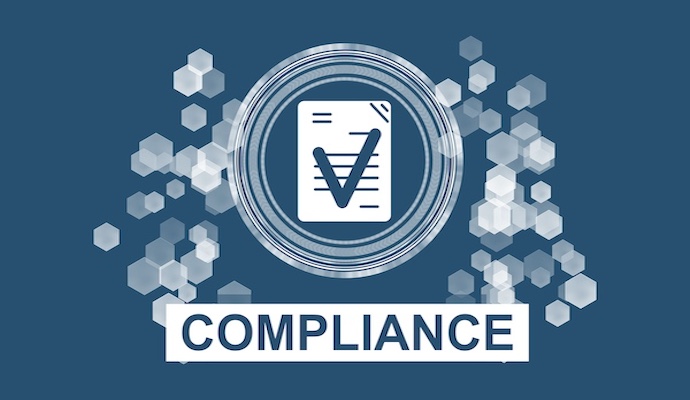Ensuring Drug Safety Through Regulatory Compliance
Regulatory compliance ensures drug safety by enforcing standards, preventing harm, and ensuring quality control.

Source: Adobe Stock
- In healthcare technology, the intersection of science and regulations is where innovation meets responsibility. Nowhere is this more evident than in the pharmaceutical industry, where drug safety is paramount. Regulatory compliance plays a pivotal role in ensuring the safety and efficacy of drugs in the United States. This article explores the significance of regulatory compliance in drug safety, backed by real-world examples that shed light on its critical role.
The Foundation of Drug Safety
The United States Food and Drug Administration (FDA) regulates the pharmaceutical industry by monitoring products that impact public health. The FDA's rigorous oversight encompasses every aspect of drug development, from initial research to clinical trials and post-market surveillance. This oversight's core is regulatory compliance — a comprehensive framework designed to protect patients from potential harm.
One of the most infamous examples of the consequences of inadequate regulatory compliance is the thalidomide tragedy. In the late 1950s and early 1960s, thalidomide was widely prescribed to pregnant women as a remedy for morning sickness. However, it was not thoroughly tested for safety, leading to severe congenital disabilities in thousands of babies worldwide.
The thalidomide disaster prompted the US government to strengthen its drug regulations. In October 1962, the Kefauver–Harris Drug Amendments were enacted, mandating stricter drug approval, efficacy, and safety controls. This incident underscores the vital role of regulatory compliance in preventing catastrophic consequences.
The Modern Regulatory Landscape
Over the decades, drug regulations have evolved significantly. Today, the drug development process is marked by stringent protocols, comprehensive documentation, and extensive oversight. Several key elements characterize the compliance landscape.
Clinical Trials and Data Integrity
Clinical trials are the backbone of drug development, and maintaining data integrity is paramount. The FDA ensures that trials are conducted ethically with scientific rigor. Recently, the agency has emphasized the importance of real-world evidence and electronic data capture (EDC) systems to enhance data quality and transparency.
The development of COVID-19 vaccines offers a recent example of the critical role of clinical trial compliance. Pfizer's vaccine, in collaboration with BioNTech, underwent rigorous testing. Data from the clinical trials demonstrated its safety and efficacy, leading to Emergency Use Authorization (EUA) and full approval by the FDA. Despite the accelerated timeline, this stringent process gave the public confidence in the vaccine's safety.
Pharmacovigilance and Post-Market Surveillance
Regulatory compliance does not end with drug approval — it extends to post-market surveillance, where companies and regulatory agencies continuously monitor the safety of approved drugs.
The opioid crisis in the United States is a stark reminder of the importance of post-market surveillance. Opioid manufacturers faced allegations of downplaying the addictive nature of their products and promoting them for inappropriate uses. Regulatory authorities, including the FDA, have since taken steps to tighten regulations and increase monitoring of opioid medications, focusing on safety and prescribing practices.
Digital Transformation and Regulatory Compliance
As technology advances, so does the landscape of regulatory compliance. Healthcare technology has played a pivotal role in streamlining regulatory processes, improving data management, and enhancing patient safety.
Electronic health records have revolutionized patient care and regulatory compliance. They enable healthcare providers to maintain detailed patient histories, ensure accurate prescribing, and facilitate adverse event reporting, all critical components of drug safety.
The widespread adoption of EHRs has transformed patient care. For instance, the introduction of computerized physician order entry (CPOE) systems has reduced medication errors, ultimately contributing to drug safety. EHRs also facilitate compliance with regulatory requirements, such as meaningful use criteria, promoting better patient outcomes.
Artificial Intelligence (AI) and Machine Learning (ML)
AI and ML are also changing the game in drug safety. These technologies can process vast amounts of data, identify patterns, and predict adverse events more accurately. Regulatory agencies increasingly harness AI to analyze real-world evidence, leading to quicker and more targeted safety assessments.
In 2021, the FDA launched the "FAERS Data Modernization" initiative, leveraging AI and natural language processing to enhance pharmacovigilance. By automating the analysis of adverse event reports, the FDA can identify potential safety concerns more rapidly and take appropriate regulatory actions.
Challenges and Future Directions
While regulatory compliance is undeniably essential, it comes with its own set of challenges. Striking a balance between safety and innovation, adapting to evolving technologies, and ensuring global harmonization of standards remain ongoing endeavors.
Globalization of the pharmaceutical industry necessitates international collaboration on regulatory compliance. Harmonizing standards and sharing best practices across borders is crucial to ensure consistent drug safety standards worldwide.
The International Council for Harmonization of Technical Requirements for Pharmaceuticals for Human Use (ICH) is a prime example of international collaboration in drug regulation. This international nonprofit association brings together regulators and industry experts worldwide to develop and harmonize pharmaceutical guidelines, promoting global drug safety standards.
Cybersecurity and Data Protection
With the increasing digitization of healthcare, safeguarding patient data and maintaining the integrity of electronic systems are paramount. Regulatory compliance extends to cybersecurity measures, ensuring that patient information remains confidential and secure.
The rise in ransomware attacks on healthcare institutions highlights the importance of cybersecurity in maintaining regulatory compliance. These attacks can disrupt patient care, compromise sensitive data, and pose significant risks to drug safety. Regulatory agencies are working to establish cybersecurity guidelines to protect critical healthcare infrastructure.
In 2022, the healthcare and public health sector garnered the highest number of reported ransomware attacks to the FBI among all critical infrastructure sectors, according to federal authorities.
Regulatory compliance is a linchpin in the healthcare technology landscape in ensuring drug safety. As technology advances, regulatory agencies and industry stakeholders must work collaboratively to adapt to new challenges and uphold the highest drug safety standards in the US.
